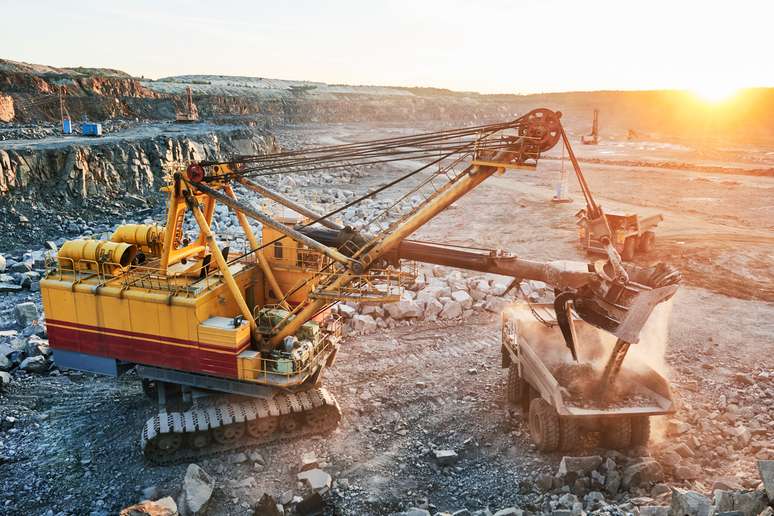Business Lists and Databases Available for Marketing and Research - Direct Mailing Emailing Calling
NAICS Code 212311 - Dimension Stone Mining and Quarrying
Government Level - NAICS 6-Digit - Updated to 2022 NAICSBusiness Lists and Databases Available for Marketing and Research
Business List Pricing Tiers
| Quantity of Records | Price Per Record | Estimated Total (Max in Tier) |
|---|---|---|
| 0 - 1,000 | $0.25 | Up to $250 |
| 1,001 - 2,500 | $0.20 | Up to $500 |
| 2,501 - 10,000 | $0.15 | Up to $1,500 |
| 10,001 - 25,000 | $0.12 | Up to $3,000 |
| 25,001 - 50,000 | $0.09 | Up to $4,500 |
| 50,000+ | Contact Us for a Custom Quote | |
What's Included in Every Standard Data Package
- Company Name
- Contact Name (where available)
- Job Title (where available)
- Full Business & Mailing Address
- Business Phone Number
- Industry Codes (Primary and Secondary SIC & NAICS Codes)
- Sales Volume
- Employee Count
- Website (where available)
- Years in Business
- Location Type (HQ, Branch, Subsidiary)
- Modeled Credit Rating
- Public / Private Status
- Latitude / Longitude
- ...and more (Inquire)
Boost Your Data with Verified Email Leads
Enhance your list or opt for a complete 100% verified email list – all for just $0.10 per email!
NAICS Code 212311 Description
This U.S. industry comprises establishments primarily engaged in developing the mine site and/or mining or quarrying dimension stone (i.e., rough blocks and/or slabs of stone). Source: Census.gov - NAICS 2022 compliant
NAICS Code 212311 - Dimension Stone Mining and Quarrying is a final level code of the “Mining, Quarrying, and Oil and Gas Extraction” Sector. There are 765 companies verified as active in this industry in the USA with an estimated employment of 4,009 people.
Industry Sector
Mining, Quarrying, and Oil and Gas ExtractionAnnual Payroll
$143,106,000Total Revenue
$567,426,000SBA Size Standard
Maximum 500 EmployeesParent Category - 5-digit Level (less specific)
Marketing: NAICS Codes (8-digit) for Dimension Stone Mining and Quarrying
Access In-depth Industry Analysis: Reach out to companies and executives within these industries.
Industry Examples of NAICS 212311
Common types of examples within NAICS Code 212311 - Dimension Stone Mining and Quarrying are:
- Argillite mining or quarrying
- Basalt mining or quarrying
- Bluestone mining or quarrying
- Calcareous tufa mining or quarrying
- Diabase mining or quarrying
- Dimension stone mining or quarrying
- Diorite mining or quarrying
- Dolomite mining or quarrying
- Dolomitic marble mining or quarrying
- Flagstone mining or quarrying
- Gabbro mining or quarrying
- Gneiss mining or quarrying
- Granite mining or quarrying
- Greenstone mining or quarrying
- Limestone mining or quarrying
- Marble mining or quarrying
- Mica schist mining or quarrying
- Onyx marble mining or quarrying
- Quartzite dimension stone mining or quarrying
- Sandstone mining or quarrying
- Schist, mica, mining or quarrying
- Serpentine mining or quarrying
- Slate mining or quarrying
- Stone, dimension, mining or quarrying
- Syenite (except nepheline) mining or quarrying
- Trap rock mining or quarrying
- Travertine mining or quarrying
- Tufa, calcareous, mining or quarrying
- Verde' antique mining or quarrying
- Volcanic rock, mining or quarrying
Industry Image
Example photo for industry NAICS 212311 - Dimension Stone Mining and Quarrying . This image represents an activity or product found in this industry.

Cross-References
Industry Executives
Would you like to email executives in NAICS Code 212311 - Dimension Stone Mining and Quarrying ? Below are some of the common job titles available to be targeted.
- Business Development
- Chairman
- C-Level
- Director
- Engineering
- Executive Director
- Facilities
- Finance
- Human Resource
- IT
- Manager
- Marketing
- Manufacturing
- Operations
- Owner
- Partner
- President
- Principal
- Purchasing
- Sales
- Vice President
For specific job title targeting, please provide details in the business list request form.
USA Import, Export, and Balance of Trade
Import (USD)
$133,029,412Export (USD)
$142,563,540Balance of Trade (USD)
$9,534,128Top Countries by U.S. Imports
| Canada | $28,601,301 |
| China | $26,236,688 |
| Turkey | $19,749,906 |
| Brazil | $14,017,378 |
| India | $13,849,914 |
Top Countries by U.S. Exports
| Mexico | $27,731,143 |
| Australia | $26,533,970 |
| Canada | $26,486,091 |
| Italy | $19,865,887 |
| China | $15,092,586 |
Countries With Highest Trade Surplus
| Mexico | $27,565,696 |
| Australia | $26,453,099 |
| Norway | $11,323,508 |
| Italy | $8,195,671 |
| France | $5,563,590 |
Countries With Highest Trade Deficit
| Turkey | -$19,715,871 |
| Brazil | -$14,008,890 |
| India | -$13,756,548 |
| China | -$11,144,102 |
| Korea, South | -$4,587,838 |
U.S. Total Import value for NAICS Code 212311 is $133,029,412. Canada, China, and Turkey accounted for the top imports of Dimension Stone in 2018.
U.S. Total Export value for this industry is $142,563,540. Mexico, Australia, and Canada accounted for the top exports of Dimension Stone in 2018.
Questions & Answers
-
What is the SBA size standard for NAICS 212311?
Businesses up to 500 Employees in size are considered small businesses by SBA.
-
How many active businesses operate in NAICS Code 212311?
There are 765 verified business locations operating primarily in this industry.
-
What was the total revenue for NAICS Code 212311?
In 2017 the total revenue for Dimension Stone Mining and Quarrying was $567,426,000
-
What was the annual payroll for NAICS Code 212311?
In 2017 the annual payroll for Dimension Stone Mining and Quarrying was $143,106,000
-
How many people work in NAICS Code 212311?
The number of reported paid employees is 4,009.